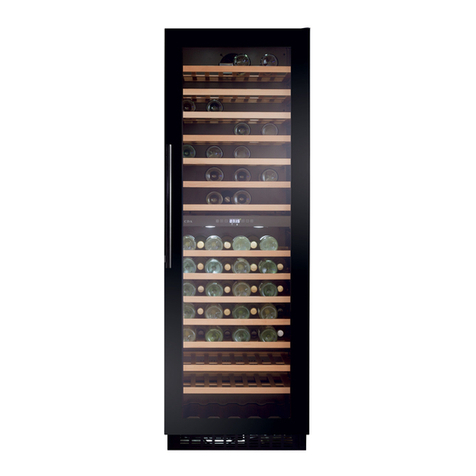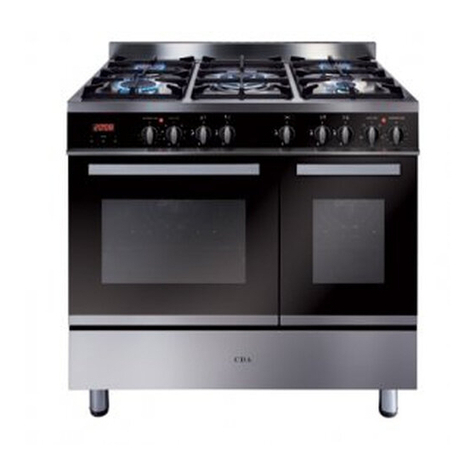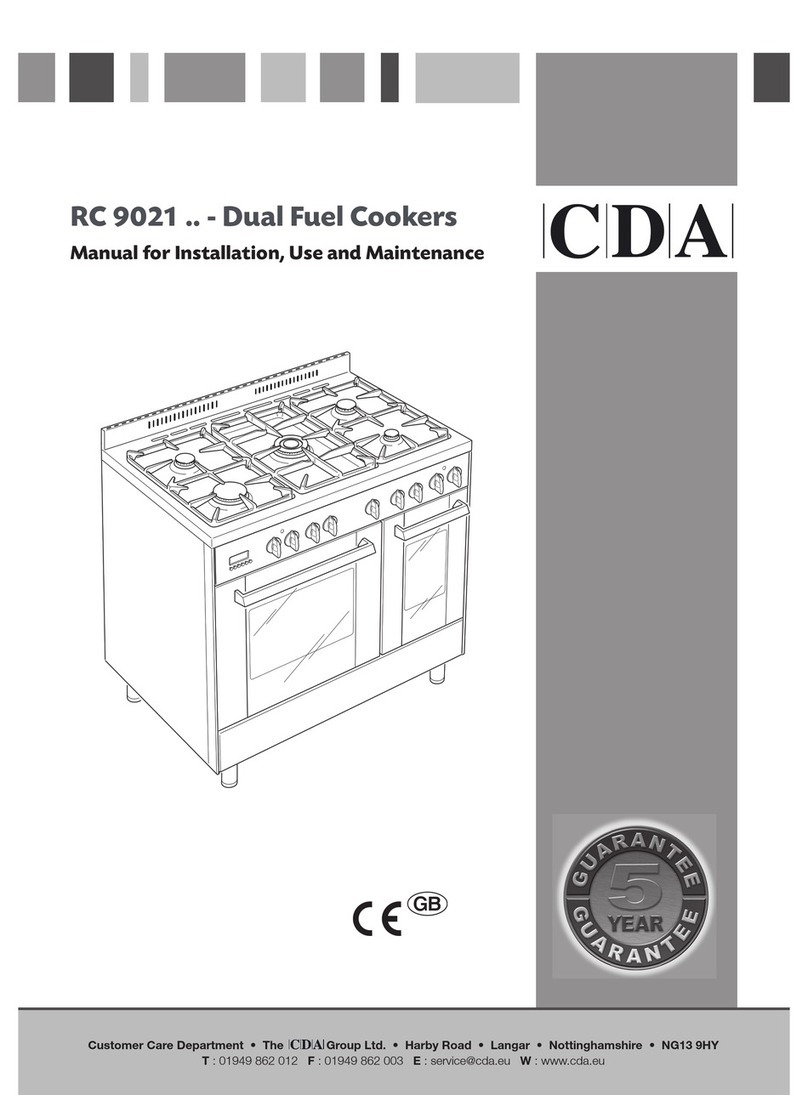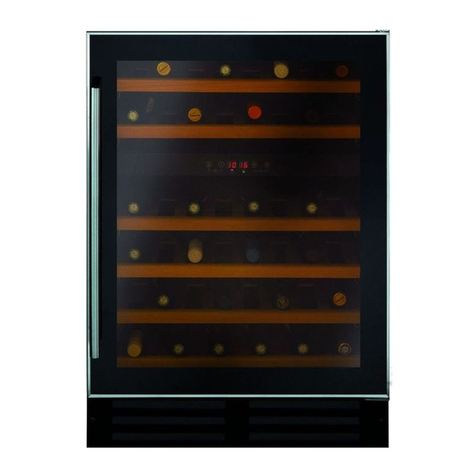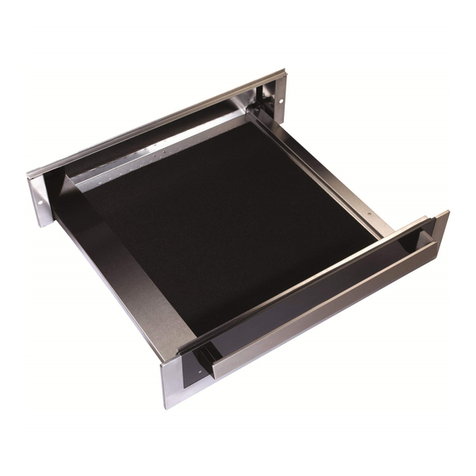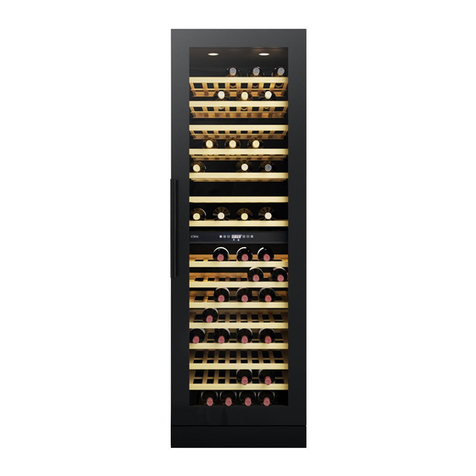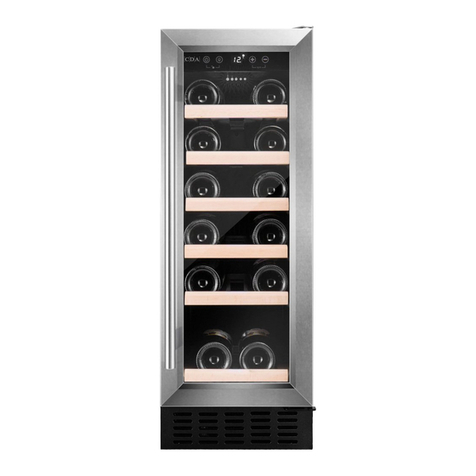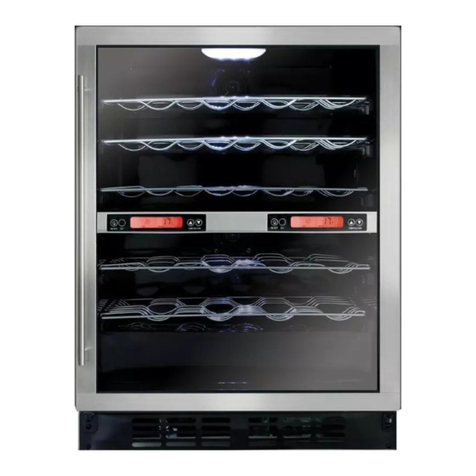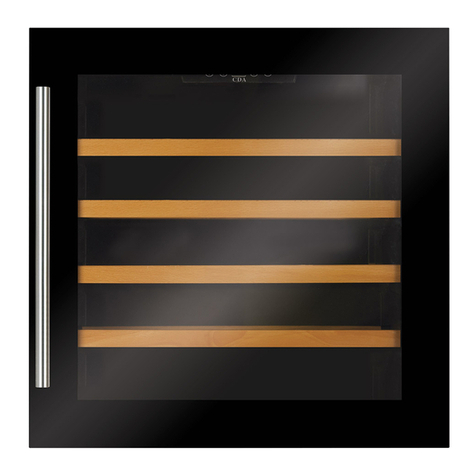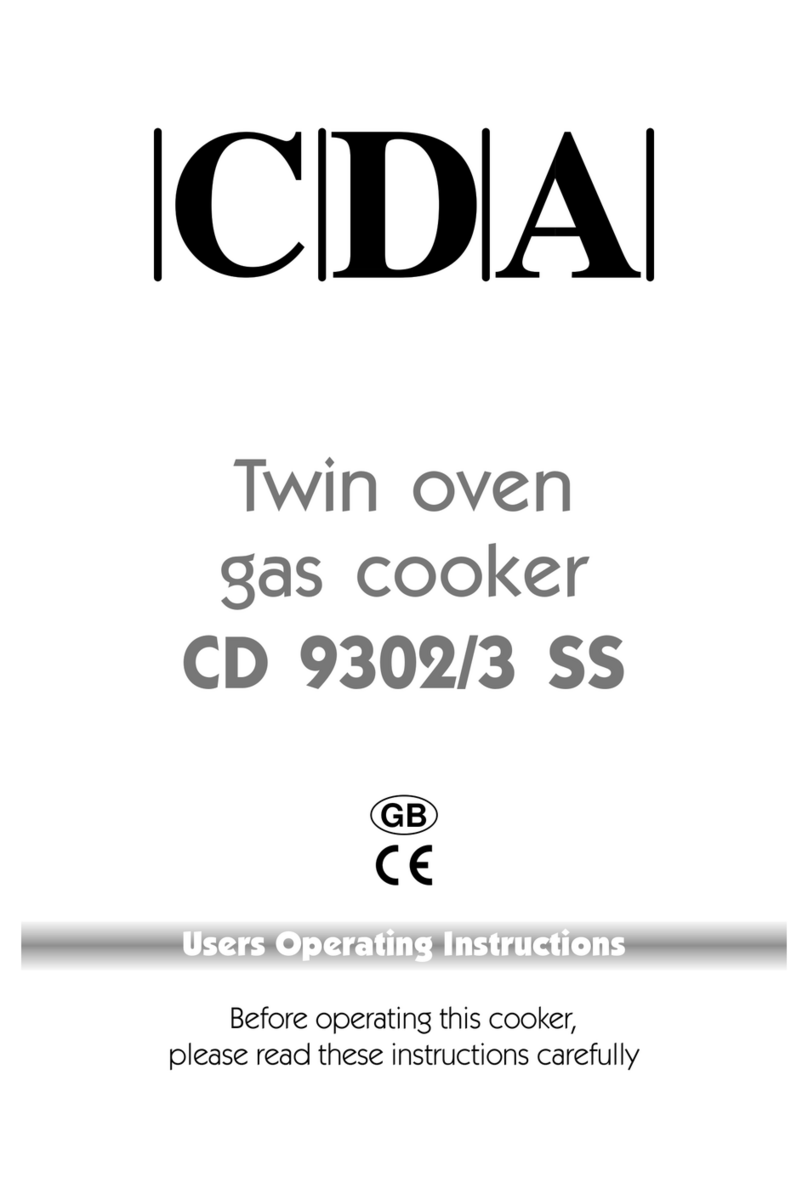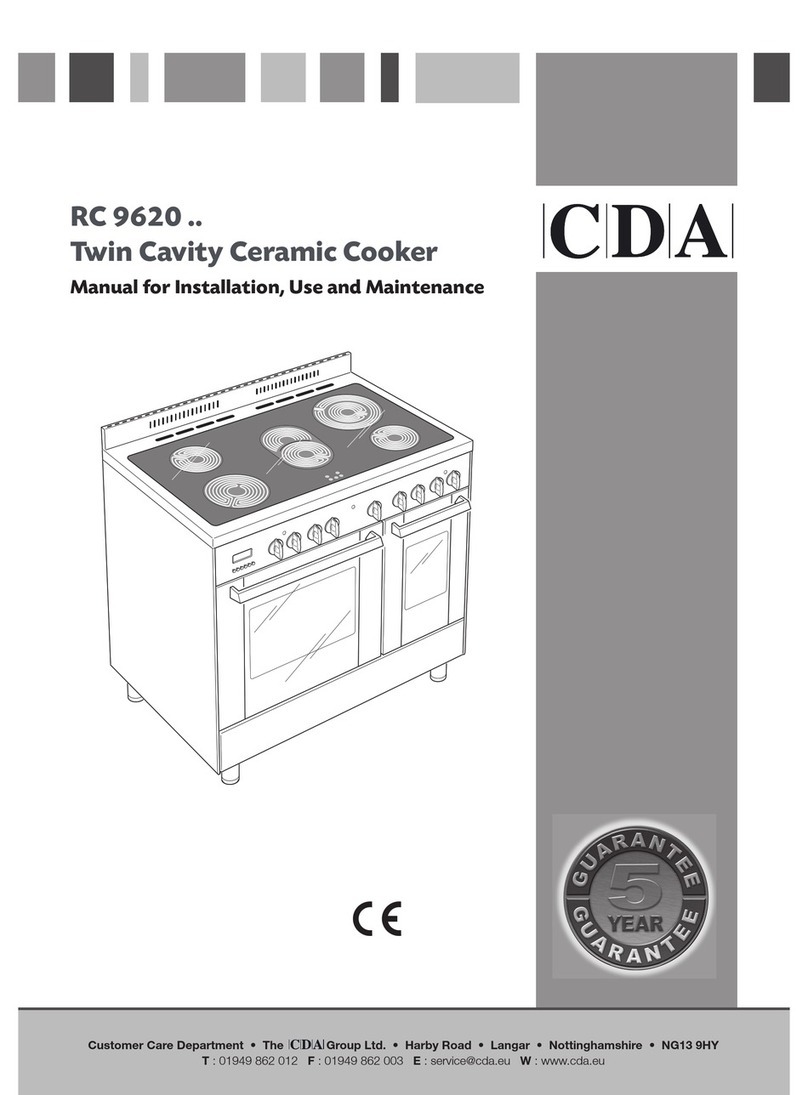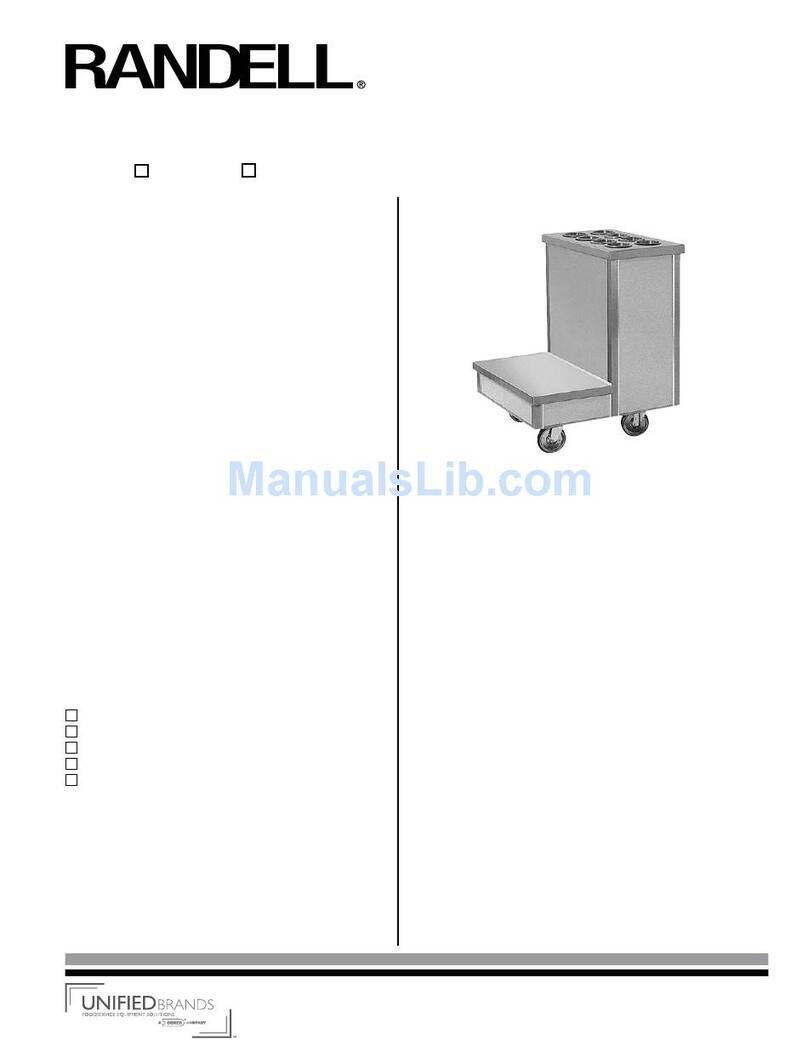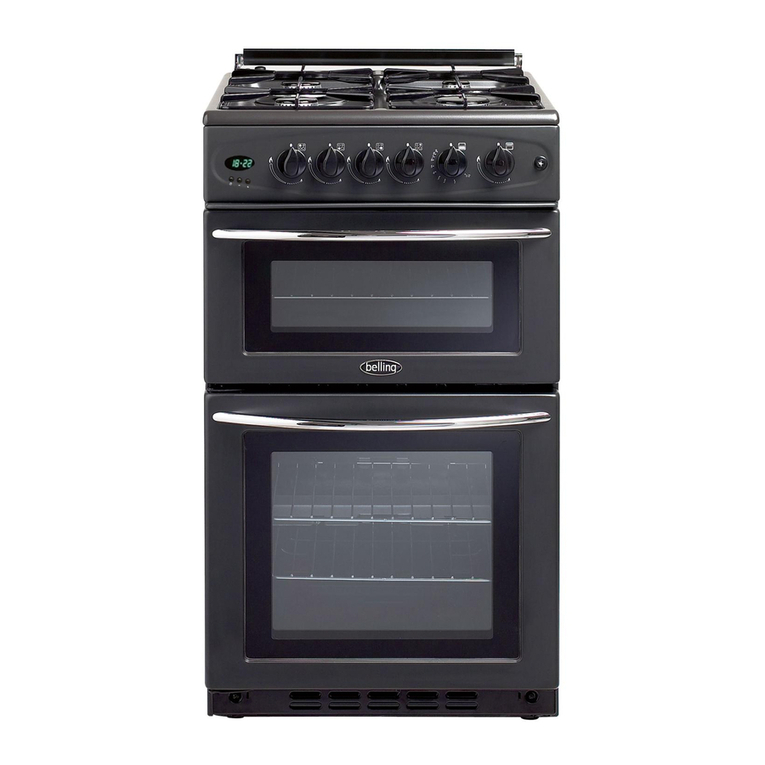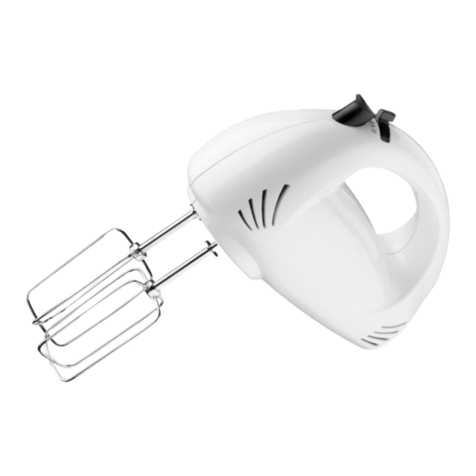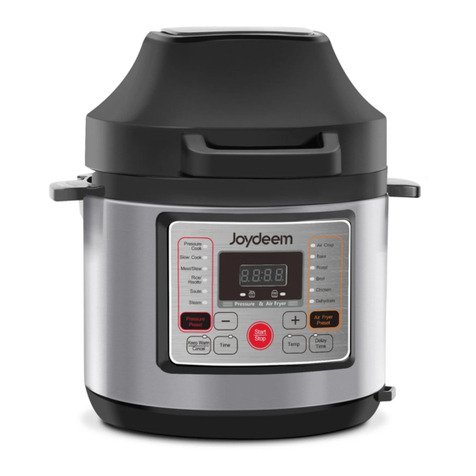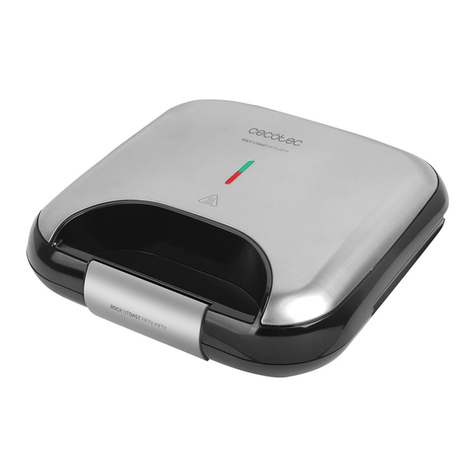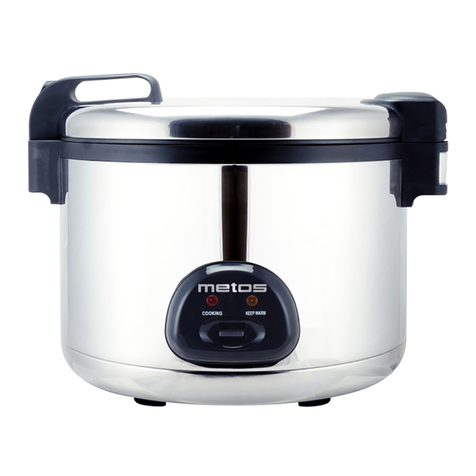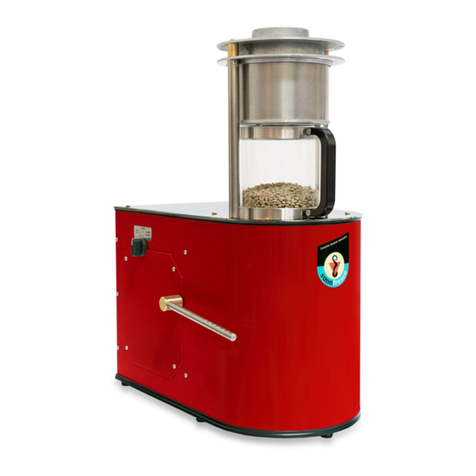CDA GB RV 701 SS Instruction Manual

Customer Care Department • The Group Ltd. • Harby Road • Langar • Nottinghamshire • NG13 9HY
RV 701/2 SS Dual Fuel Cooker
Manual for Installation, Use and Maintenance
GB

2

3
Important
This appliance is designed and manufactured solely for the cooking of domestic (household) food
and is not suitable for any non domestic application and therefore should not be used in a com-
mercial environment.
The appliance guarantee will be void if the appliance is used within a non domestic environment
i.e. a semi commercial, commercial or communal environment.
The CDA Group Ltd cannot be held responsible for injuries or losses caused by incorrect use or
installation of this product. Please note that CDA reserve the right to invalidate the guarantee
supplied with this product following incorrect installation or misuse of the appliance.
Appliance Information:
Please enter the details on the appliance rating plate below for reference, to assist CDA Customer
Care in the event of a fault with your appliance and to register your appliance for guarantee pur-
poses.
Appliance Model
Serial Number
Declaration of CE Conformity
This cooker has been designed, constructed and marketed in compliance with:
• Safety requirements of EU Directive “Gas” 2009/142/EC;
• Safety requirements of EU Directive “Low Voltage” 2006/95/EC;
• Protection requirements of EU Directive “EMC”2004/108/EC;
• Requirements of EU Directive 93/68/EEC;
• Requirements of EU Directive 2011/65/EU.
Important Information for Correct Disposal of the Product in Accordance with
EC Directive 2002/96/EC.
At the end of its working life, the product must not be disposed of as urban
waste. It must be taken to a special local authority dierentiated waste
collection centre or to a dealer providing this service.
Disposing of a household appliance separately avoids possible negative
consequences for the environment and health deriving from inappropriate
disposal and enables the constituent materials to be recovered to obtain
signicant savings in energy and resources. As a reminder of the need to
dispose of household appliances separately, the product is marked with a
crossed-out wheeled dustbin.
GB

4
IMPORTANT SAFETY PRECAUTIONS AND RECOMMENDATIONS
IMPORTANT: This appliance is designed and manufactured solely
for the cooking of domestic (household) food and is not suitable
for any non domestic application and therefore should not be
used in a commercial environment.
The appliance guarantee will be void if the appliance is used
within a non domestic environment i.e. a semi commercial,
commercial or communal environment.
Read the instructions carefully before installing and using the
appliance.
• After having unpacked the appliance, check to ensure that it is not
damaged and that the oven door closes correctly.
In case of doubt, do not use it and consult your supplier or a
professionally qualied technician.
• Packing elements (i.e. plastic bags, polystyrene foam, nails, packing
straps, etc.) should not be left around within easy reach of children, as
these may cause serious injuries.
• Some appliances are supplied with a protective lm on steel and
aluminium parts. This lm must be removed before using the
appliance.
• IMPORTANT: The use of suitable protective clothing/gloves is
recommended when handling or cleaning this appliance.
• Do not attempt to modify the technical characteristics of the appliance
as this may become dangerous to use. The manufacturer declines all
responsibility for any inconvenience resulting from the inobservance
of this condition.
• CAUTION: this appIiance must only be installed in a permanently
ventilated room in compliance with the applicable regulations.
• Do not operate your appliance by means of an external timer or
separate remote-control system.
• Do not carry out cleaning or maintenance operations on the appliance
without having previously disconnected it from the electric power
supply.
• WARNING: Ensure that the appliance is switched o before replacing
the oven lamp to avoid the possibility of electric shock.

5
• Do not use a steam cleaner because the moisture can get into the
appliance thus make it unsafe.
• Do not touch the appliance with wet or damp hands (or feet).
• Do not use the appliance whilst in barefoot.
• If you should decide not to use this appliance any longer (or decide to
substitute another model), before disposing of it, it is recommended
that it be made inoperative in an appropriate manner in accordance
to health and environmental protection regulations, ensuring in
particular that all potentially hazardous parts be made harmless,
especially in relation to children who could play with unused
appliances.
• The various components of the appliance are recyclable. Dispose of
them in accordance with the regulations in force in your country. If the
appliance is to be scrapped, remove the power cord.
• After use, ensure that the knobs are in the o position.
• Children less than 8 years of age shall be kept away unless continuously
supervised.
• This appliance can be used by children aged from 8 years and above
and persons with reduced physical, sensory or mental capabilities or
lack of experience and knowledge if they have been given supervision
or instruction concerning use of the appliance in a safe way and
understand the hazards involved. Children shall not play with the
appliance. Cleaning and user maintenance shall not be made by
children without supervision.
• The manufacturer declines all liability for injury to persons or damage
to property caused by incorrect or improper use of the appliance.
• WARNING: During use the appliance and its accessible parts become
hot; they remain hot for some time after use.
– Care should be taken to avoid touching heating elements (on the
hob and inside the oven).
– The door is hot, use the handle.
– To avoid burns and scalds, young children should be kept away.
• Make sure that electrical cables connecting other appliances in the
proximity of the cooker cannot come into contact with the hob or
become entrapped in the oven door.
• WARNING: Unattended cooking on a hob with fat or oil can be
dangerous and may result in re. NEVER try to extinguish a re with

6
water, but switch o the appliance and then cover ame e.g. with a lid
or a re blanket.
• WARNING: Danger of re: do not store items on the cooking surfaces.
• WARNING: When correctly installed, your product meets all safety
requirements laid down for this type of product category. However
special care should be taken around the rear or the underneath of the
appliance as these areas are not designed or intended to be touched
and may contain sharp or rough edges, that may cause injury.
• FIRST USE OF THE OVEN - it is advised to follow these instructions:
– Furnish the interior of the oven as described in the chapter
“CLEANING AND MAINTENANCE”.
– Switch on the empty oven on max to eliminate grease from the
heating elements.
– Disconnect the appliance from the electrical power supply, let the
oven cool down and clean the interior of the oven with a cloth
soaked in water and neutral detergent; then dry carefully.
• CAUTION: Do not use harsh abrasive cleaners or sharp metal scrapers
to clean the oven door glass since they can scratch the surface, which
may result in shattering of the glass.
• Do not line the oven walls with aluminium foil. Do not place baking
trays or the drip tray on the base of the oven chamber.
• FIRE RISK! Do not store ammable material in the oven or in the
storage compartment.
• Always use oven gloves when removing the shelves and food trays
from the oven whilst hot.
• Do not hang towels, dishcloths or other items on the appliance or its
handle – as this could be a re hazard.
• Clean the oven regularly and do not allow fat or oils to build up in the
oven base or tray. Remove spillages as soon as they occur.
• Do not stand on the cooker or on the open oven door.
• Always stand back from the appliance when opening the oven door to
allow steam and hot air to escape before removing the food.
• SAFE FOOD HANDLING: Leave food in the oven for as short a time
as possible before and after cooking. This is to avoid contamination
by organisms which may cause food poisoning. Take particular care
during warmer weather.
• WARNING: Take care NOT to lift the cooker by the door handle.

7
GAS BURNERS
1. Auxiliary burner (A) 1,00 kW
2. Semi-rapid burner (SR) 1,75 kW
3. Rapid burner (R) 3,00 kW
4. Triple-ring burner (TR) 3,50 kW
Features and Technical Data
Important Notes:
– The electric ignition is incorporated in the knobs.
– The appliance has a safety valve system tted, the ow of gas will be stopped if and when the
ame should accidentally go out.
Fig. 1
2
1
4
3
2
Conventional Oven
Fan Oven

8
Controls Description
1. Front right rapid burner control knob (3)
2. Rear right semi-rapid burner control knob (2)
3. Central triple-ring burner control knob (4)
4. Rear left semi-rapid burner control knob (2)
5. Front left auxiliary burner control knob (1)
6. Conventional oven thermostat knob (top oven)
7. Conventional oven switch knob (top oven)
8. Fan oven switch/thermostat knob (bottom main oven)
9. Electronic programmer (bottom main oven only)
Pilot lamps:
10. Bottom main oven temperature indicator light
11. Top oven temperature indicator light
Control Panel
Fig. 2
9 8 7 6 5 4 3 12
1110
Please note: This appliance incorporates a safety cooling fan which you will hear operating
whenever the oven or grill is being used.
The cooling fan may even run on after the appliance has been switched o.
The duration of this time is dependent on several factors, including previous cooking temperature,
duration and ambient temperature. Times in excess of 30 minutes are not uncommon.

9
Clock and Timer with “Touch-Control” Keys
(Bottom Main Oven only)
KEYS:
+and –Touched simultaneously (for more than 2 seconds):
• setting the clock;
• setting the timer volume (by touching once, along with the“MODE” key);
• to cancel automatic cooking at any time.
MODE Function selection (touched for more than 2 seconds):
• setting the clock (only after rst connection or after a power failure);
• timer;
• automatic cooking “dur”(duration) - how long the food will take to cook
(by touching the“MODE” key again);
• automatic cooking“End”- the time you would like the oven turns o (by
touching the “MODE”key two more times);
+Increases the number shown on the display
–Decreases the number shown on the display
ILLUMINATED SYMBOLS:
AUTO ashing - Automatic cooking completed, oven in automatic position but not
set
AUTO steady illumination - Oven set for automatic cooking, cooking still not ta-
king place
ashing - Timer being set
steady illumination - Timer in operation
steady illumination - Oven set for manual cooking
and AUTO AUTO ashing - Automatic cooking being set
and AUTO
steady illumination - Oven set for automatic cooking, cooking taking place.
Fig. 3

10
“TOUCHCONTROL” KEYS
The “touch-control” keys should be operated by the ngers (just by touching the key).
When using touch controls it is best to use the ball of your nger rather than the tip.
The keys are automatically deactivated:
• 8 seconds after the last selection; the deactivation is indicated by an acoustic signal (“beep”).
To reactivate just touch the “MODE” key or the “+” and “–” keys.
SETTING THE CLOCK
When rst connected, or after a power failure, the digits and “AUTO” will show on the display. To
set the clock, touch the “MODE“ key, for more than 2 seconds, and then the“+” or “–” keys.
Important: The oven does not operate, in manual cooking, without rst having set the clock.
To set the clock, with the appliance already connected, touch the “+” and “–” keys simultaneously
(for more than 2 seconds), then “+” or “–” keys.
Important:
• changing the time will delete any automatic program;
• after setting the clock, the oven starts to operate in the selected function (manual
cooking). The “ ” symbol is steady illuminated.
USING THE TIMER
You can use the timer at any time, even when the oven is not in use.
The timer does not turn the oven o.
The timer can be set for up to 23 hours and 59 minutes.
• To set the timer, touch the “MODE” key for more than 2 seconds (the “ ” symbol ashes),
then the “+” or “–” keys.
• After about 8 seconds an acoustic signal (“beep”) will sound conrming the regulation (“
” symbol steady illuminated).
• To check the remaining time touch the“MODE“ key for more than 2 seconds. If the remaining
time is more than a minute the display will show hours and minutes; if less than a minute the
display will show seconds.
• When the time is up, the timer will beep. Touch the “MODE” key , for more than 2 seconds, to
turn it o; or press the“+” or “–” key to stop the beep and then the“MODE” key, for more than
2 seconds, to deactivate the “ ” symbol ashing on the display.
• Turn o the oven manually (function and thermostat knobs in the o position) if the
manual cooking has been completed.
SETTING THE TIMER VOLUME
You can select from three volume levels.
• Touch the “+” and “–” keys simultaneously for more than 2 seconds.
• Touch the “MODE” key; you can read on the display the current timer volume (“ton1”, “ ton2”
or “ton3”).
• Touch the “–” key to listen or change the timer volume.
• Timer volume activated: the last displayed.
• After about 8 seconds an acoustic signal (“beep”) will sound conrming the volume setting;
then the time of day will be displayed.

11
AUTOMATIC COOKING BOTTOM MAIN OVEN ONLY
Use automatic cooking to automatically turn the oven on, cook, and then turn the oven o.
1. Check the clock shows the correct time.
2. Select the function and temperature (function and temperature knobs). The oven will come
on.
3. Decide how long the food will take to cook, allowing time for preheating if necessary.
4. Touch the “MODE” key for more than 2 seconds and then touch again. “dur” will show
(duration). Using the“+” and “–” keys, set the cooking time.
5. Decide the time you would like the oven to turn o; touch the “MODE” key for more than 2
seconds and then touch it two times again.“End” will show. Using the“+” and “–” keys, set the
stop time.
Note: While “dur”is displayed you can change to “End” just by touching one time the “MODE” key
(within 8 seconds from the last selection).
If there is time to wait before cooking starts, the current time of day and “AUTO” will show in the
clock display. The oven will switch o but is now set for automatic cooking.
If you are already at home to turn the oven on and only want the oven to turn o automatically,
start cooking as normal, then follow step 4 or step 5 to set a time to stop the oven.
When automatic cooking starts, “ ” will be displayed and the oven will turn on.
• To see the remaining cook time, follow step 4 up to display “dur” (duration).
• To see the set stop time, follow step 5 up to display “End”.
• To cancel automatic cooking at any time, touch the “+” and “–” keys simultaneously (for more
than 2 seconds) and turn the temperature and function knobs to the o position.
When the stop time is reached, the oven will turn o, the timer will beep and “AUTO” will ash:
• Touch any key to stop the beeping.
• Touch the“MODE”key, for more than 2 seconds, to return the oven to the manual mode (“
” symbol steady illuminated on the display).
• Turn the temperature and function knobs to the o position.
Attention: After a power failure any automatic programme is deleted. Turn o the oven
manually.

12
How to Use the Hob Burners
Hob Burners
Each hob burner is controlled by a separate gas
valve operated by a control knob (g. 4) which has 3
positions marked on the control panel, these are:
– Symbol : Tap closed (burner
o)
– Symbol : High (maximum)
– Symbol : Low (minimum)
Push in and turn the knob anti-clockwise to the
selected position.
The maximum aperture position permits rapid boiling
of liquids, whereas the minimum aperture position
allows slower warming of food or maintaining boiling conditions of liquids.
To reduce the gas ow to minimum, rotate the knob further anticlockwise to point the indicator
towards the small ame symbol.
Other intermediate operating adjustments can be achieved by positioning the indicator between
the maximum and minimum aperture positions, not between the maximum aperture and closed
positions.
Note: When the hob is not being used, set the gas knobs to their closed positions and also
close the cock valve on the gas bottle or the main gas supply line.
Lighting of the Hob Burners
To ignite the burner, the following instructions are to be followed:
1. Press in the corresponding knob and turn counter-clockwise to the full ame position marked
by the
symbol (g. 4) and hold the knob in until the ame has been lit.
In the case of a mains failure light the burner with a match or lighted taper.
2. Wait about ten seconds after the gas lighting before releasing the knob (starting time for the
valve).
3. Adjust the gas valve to the desired power.
Important
If the burner ame should go out for some reason, the safety valve will automatically stop the gas
ow.
To re-light the burner, return the knob to the closed position, wait for at least 1 minute and then
repeat the lighting procedure.
If your local gas supply makes it dicult to light the burner with the knob set to maximum, set the
knob to minimum and repeat the operation.
Fig. 4

13
Choice of Burner
The burner must be choosen according to the diameter
of the pans and energy required. Saucepans with
handles which are excessively heavy, in relationship to
the weight of the pan, are less safe as they are likely to
tip. Pans which are positioned centrally on burners are
more stable than those which are oset.
It is far safer to position the pan handles in such a way that they cannot be accidentally knocked.
When deep fat frying ll the pan only one third full of oil.
DO NOT cover the pan with a lid and DO NOT leave the pan unattended.
In the unfortunate event of a re, leave the pan where it is and turn o all controls. Place a damp
cloth or correct tting lid over the pan to smother the ames.
DO NOT use water on the re.
Leave the pan to cool for at least 30 minutes.
Do not use pans with concave or convex bases.
Burner Size
Minimum Pan Diameter (cm)
Maximum Pan Diameter (cm)
Auxiliary 12 14
Semi-Rapid 16 24
Rapid 24 26
Triple Ring 26 28
Wok max 36 cm
Fig. 5
WRONG
CORRECT
WRONG
CORRECT
CORRECT USE OF TRIPLE-RING BURNER
• Flat-bottomed pans are to be placed directly onto the pan-support.
• To use the WOK, you must place the wok stand in the CORRECT position as shown in gs. 6 - 7.
IMPORTANT
The special grille for wok pans (g. 7) MUST BE PLACED ONLY over the pan-rest for the triple-ring
burner.
Fig. 6 Fig. 7

14
HOW TO USE THE FAN OVEN BOTTOM MAIN OVEN
GENERAL FEATURES
Fan cooking is more economical and quicker than cooking in a conventional oven.
The moving hot air surrounds the food and penetrates it more quickly than in a conventional oven.
The oven is equipped with a circular element (2200 W) and a fan.
Note:
Upon rst use, it is advisable to operate the oven at the maximum temperature (thermostat knob
on position 250) for 60 minutes to eliminate any traces of grease from the electrical element.
Smells and fumes produced during this burn o process are not a cause of alarm. Adequate
ventilation should however be provided in the room where the appliance is installed, e.g. by
opening a window.
OPERATING PRINCIPLES
Heating and cooking in this oven are obtained by forced convection.
A fan sucks in the air contained in the oven mue, which sends it through the circular heating
element and then sends it back through the mue. Before the hot air is sucked back again by the
fan to repeat the described cycle, it envelops the food in the oven, provoking a complete and rapid
cooking.
It is possible to cook several dishes simultaneously.
IMPORTANT
To open the bottom door operate as indicated in g. 8.
Attention:
The oven door becomes very hot during operation.
WARNING:
The door is hot, use the handle.
ATTENTION - MOST IMPORTANT
Pay special attention not to touch
the hot heating element inside the
oven cavity.
Fig. 8

15
SWITCH / TEMPERATURE SELECTOR
Rotate the knob clockwise to set the oven for one of the following functions:
O as per g. 9
Only the oven fan is on.
The fan operates without the heating element, this function can be used for
defrosting.
50 to 250 The oven light is switched on.
The oven temperature can be set between 50°C - 250°C.
The set temperature has been reached when the temperature indicator light
goes o.
Several dierent meals may be cooked simultaneously on various shelves, as
the heated air circulates evenly throughout the oven.
The hot air system cooks more quickly than conventional static system,
therefore the temperature should be set 15°C - 20°C below the values
recommended in your recipe books.
Fig. 9

16
COOKING ADVICE
STERILISATION
Sterilisation of foods to be conserved, in full and hermetically sealed jars, is done in the following
way:
a. Set the selector knob to position 185 °C and preheat the oven.
b. Fill the grill pan with hot water.
c. Set the jars onto the grill pan making sure they do not touch each other and the door and set
the knob to position 135 °C. When sterilisation has begun, that is, when the contents of the
jars start to bubble, turn o the oven and let cool.
REGENERATION
Set the selector knob to position 150° C.
Bread becomes fragrant again if wet with a few drops of water and put into the oven for about 10
minutes at the highest temperature.
ROASTING
To obtain classical roasting, it is necessary to remember:
• that it is advisable to maintain a temperature between 180° and 200 ° C.
• that the cooking time depends on the quantity and the type of foods.
OVEN COOKING
Before introducing the food, preheat the oven to the desired temperature.
For a correct preheating operation, it is advisable to remove the tray from the oven and introduce
it together with the food, when the oven has reached the desired temperature.
Check the cooking time and turn o the oven 5 minutes before the theoretical time to recuperate
the stored heat.
SIMULTANEOUS COOKING OF DIFFERENT FOODS
The fan allows a simultaneous cooking of dierent foods. Dierent foods such as sh, cake and
meat can be cooked together without mixing the smells and avours together. This is possible
since the fats and vapours are oxidized while passing through the electrical element and therefore
are not deposited onto the foods.
The only precaution to follow are:
• The cooking temperatures of the dierent foods must be as close to as possible, with a
maximum dierence of 20° - 25 °C.
• The introduction of the dierent dishes in the oven must be done at dierent times in relation
to the cooking times of each one.
• The time and energy saved with this type of cooking is obvious.

17
HOW TO USE THE CONVECTION OVEN TOP OVEN
GENERAL FEATURES
The convection oven is equipped with 3 electrical heating elements:
• 2 elements (upper and lower) for normal oven cooking;
• 1 grill element, on the top of the oven, for grilling which must be done with the oven door
closed.
The input of the elements is:
• Upper element 700 W
• Lower element 1000 W
• Grill element 2000 W
Note:
Upon rst use, it is advisable to operate the oven at the maximum temperature (thermostat knob
on position MAX) for 60 minutes in the position and for another 15 minutes in the mode
in order to eliminate any traces of grease from the electrical elements.
OPERATING PRINCIPLES
Heating and cooking in the CONVENTIONAL oven are obtained in the following ways:
a. by normal convection
The heat is produced by the upper and lower heating elements.
b. by radiation
The heat is radiated by the infra red grill element (use with the oven door closed).
WARNING:
The door is hot, use the handle.
During use the appliance becomes hot. Care should be taken to avoid touching heating ele-
ments inside the oven.
Attention: The oven door becomes very hot during operation.
Keep children away.

18
THERMOSTAT KNOB (Fig. 11)
This only sets the cooking temperature and does not switch the oven on.
Rotate clockwise until the required temperature is reached (from 50° C to MAX).
The light between the thermostat and the function selector will illuminate when the oven is
switched on and turns o when the oven reaches the correct temperature.
The light will cycle on and o during cooking in line with the oven temperature.
FUNCTION SELECTOR KNOB (Fig. 10)
Rotate the knob clockwise to set the oven for one of the following functions.
OVEN LIGHT
The oven is equipped with a light that illuminates the oven to enable visually controlling the food
that is cooking.
This light is controlled by the function selector knob (g. 10).
It remains on in all the cooking modes.
TRADITIONAL CONVECTION
The upper and lower heating elements are switched on. The heat is diused by natural convection
and the temperature must be regulated between 50° C and MAX position with the thermostat
knob.
It is necessary to preheat the oven before introducing the foods to be cooked.
Recommended for:
For foods which require the same cooking temperature both internally and externally, i. e. roasts,
spare ribs, meringue, etc.
Fig. 11Fig. 10

19
LOWER HEATING ELEMENT
In this position only the lower element is switched on. Heat is distributed by natural convection.
The thermostat can be set between 50 and 150°C; higher temperatures are not available.
Recommended for:
This mode is particularly suitable to complete cooking of dishes that require higher temperature
at the bottom.
UPPER HEATING ELEMENT
In this position only the upper element is switched on. Heat is distributed by natural convection.
The thermostat can be set between 50 and 150°C; higher temperatures are not available.
Recommended for:
This mode is particularly suitable to complete cooking of dishes that require higher temperature
at the top.
GRILLING
The infra-red heating element is switched on. The heat is diused by radiation.
Use with the oven door closed and the thermostat knob to between 50°C and 200°C.
For correct use see chapter “USE OF THE GRILL” .
Before using the grill, preheat for about ve minutes.
Always grill with the oven door closed and do not use the grill for longer than 30 minutes at any
one time.
Caution: The oven door becomes very hot during operation.
Keep children well out of reach.
Recommended for:
Intense grilling action for cooking with a broiler; browning, crisping, “au gratin”, toasting, etc.
USE OF THE GRILL
Leave to warm up for approximately 5 minutes with the door closed. Place the food inside
positioning the rack as near as possible to the grill. Insert the drip pan under the rack to collect the
cooking juices.
Grilling with the oven door closed and not for longer than 30 minutes at any one time.
Attention: the oven door becomes very hot during operation. Keep children away.
OVEN COOKING
Before introducing the food, preheat the oven to the desired temperature.
For a correct preheating operation, it is advisable to remove the tray from the oven and introduce it
together with the food, when the oven has reached the desired temperature.
Check the cooking time and turn o the oven 5 minutes before the theoretical time to use the stored
heat.

20
Cooking process Oven heat Gas mark
Electric oven temperature
°C °F
Keeping food hot, milk
puddings very cool ½120 250
Egg custards cool 1 140 275
Rich fruit cakes, brai-
sing cool 2 150 300
Low temperature
roasting, shortbread moderate 3 160 325
Victoria sandwich,
plain fruit cake,
baked sh
moderate 4 180 350
Small cakes, choux pa-
stry fairly hot 5 190 375
Short pastry, Swiss
rolls, soués fairly hot 6 200 400
High temperature roa-
sting, aky
pastry, scones
hot 7 220 425
Pu pastry, bread very hot 8 230 450
Small pu pastries,
browning cooked fo-
ods
very hot 9 240 475
These temperatures relate to the centre oven temperature.
Remember to use ovenproof dishes and to adjust the oven temperature during cooking if
necessary.
NOTE: Reduce the oven temperature by 10 – 20°C for fan assisted ovens.
For dishes that take over an hour to cook, reduce the cooking time by 10 minutes per hour.
OVEN TEMPERATURE GUIDE
Other manuals for GB RV 701 SS
1
This manual suits for next models
1
Table of contents
Other CDA Kitchen Appliance manuals
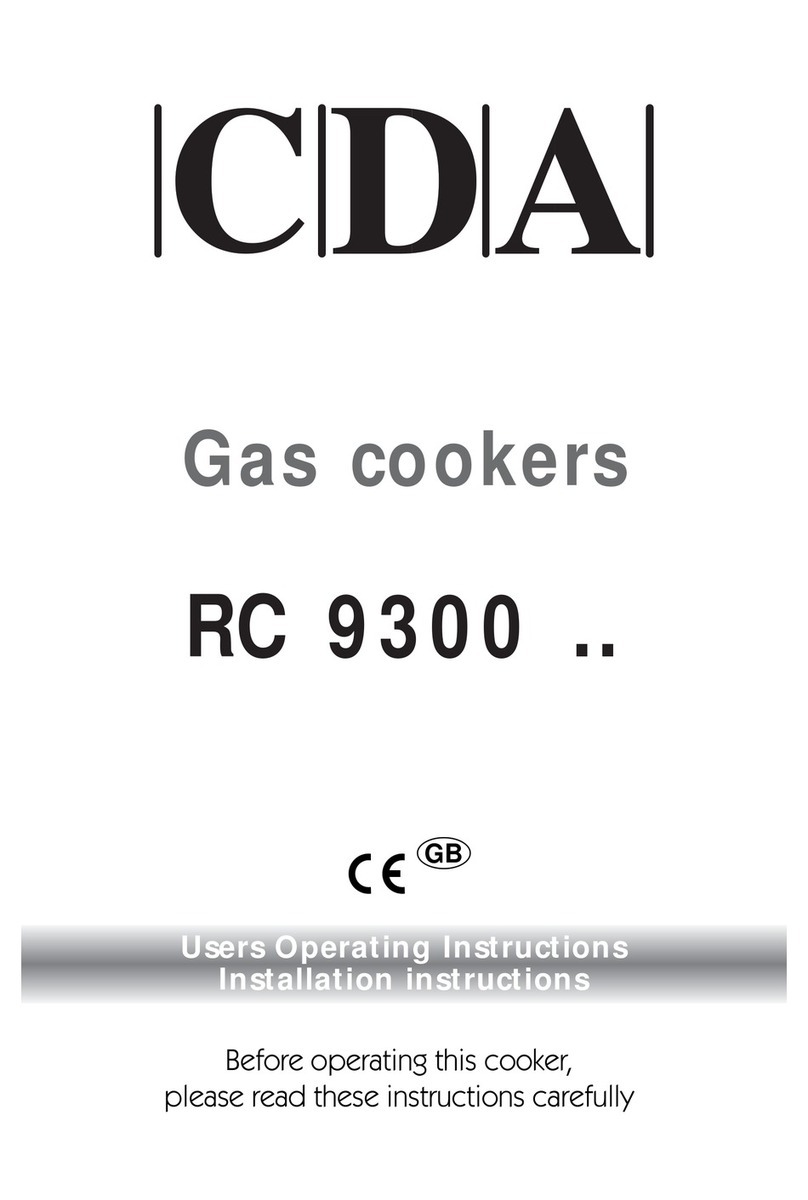
CDA
CDA RC9300 Product guide
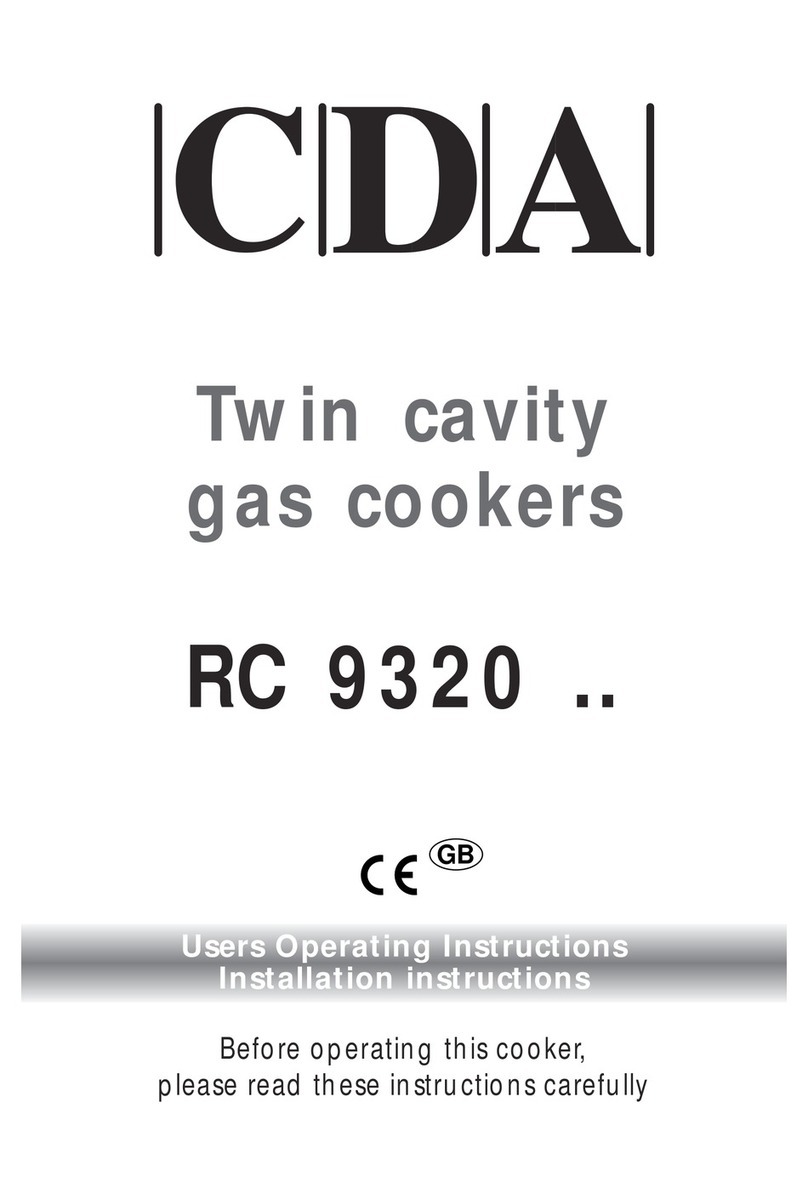
CDA
CDA RC9320 Product guide
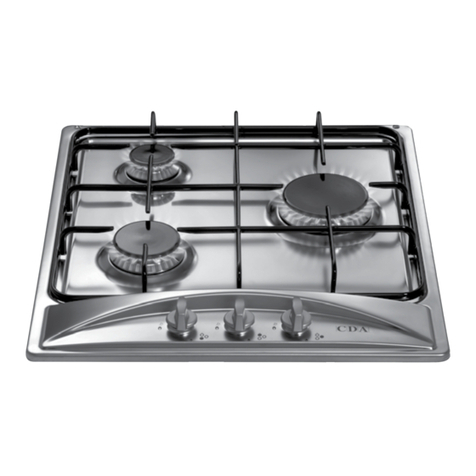
CDA
CDA HCG450 for Reference manual
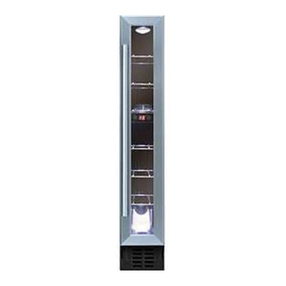
CDA
CDA FWC151 for Reference manual
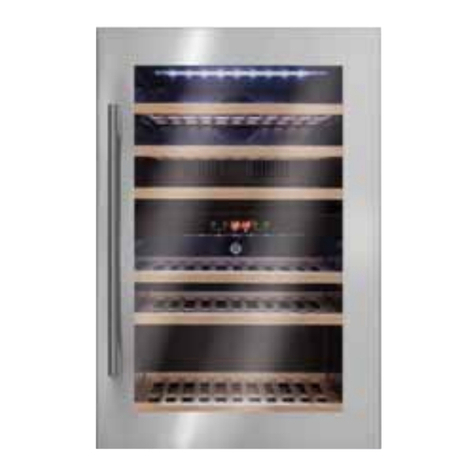
CDA
CDA FWV450 Reference manual
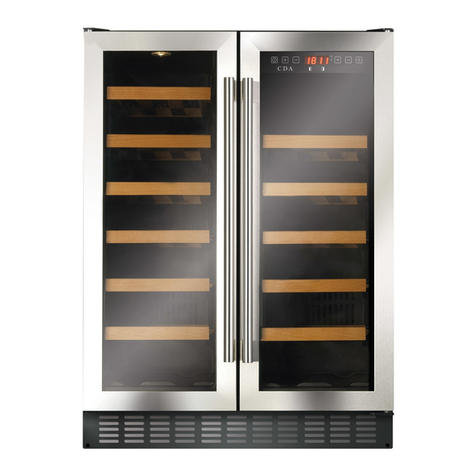
CDA
CDA FWC304 Specification sheet
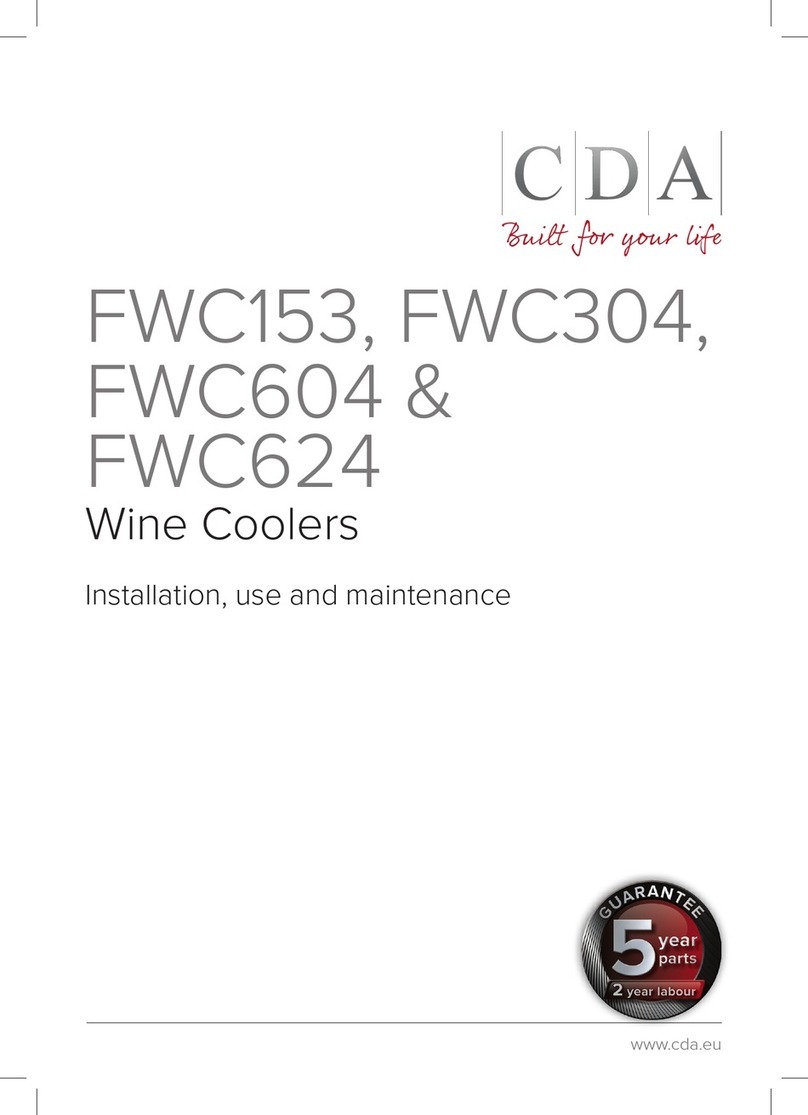
CDA
CDA FWC153 Quick start guide
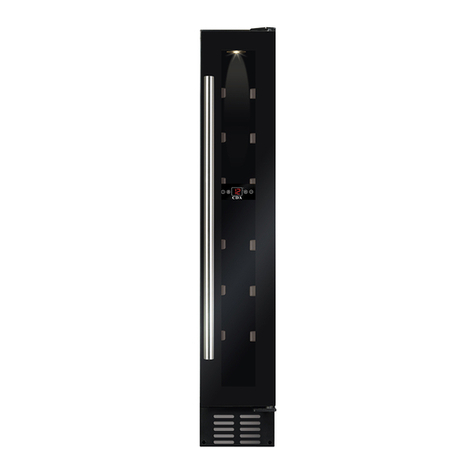
CDA
CDA FWC152 Quick start guide

CDA
CDA FWC152 Reference manual
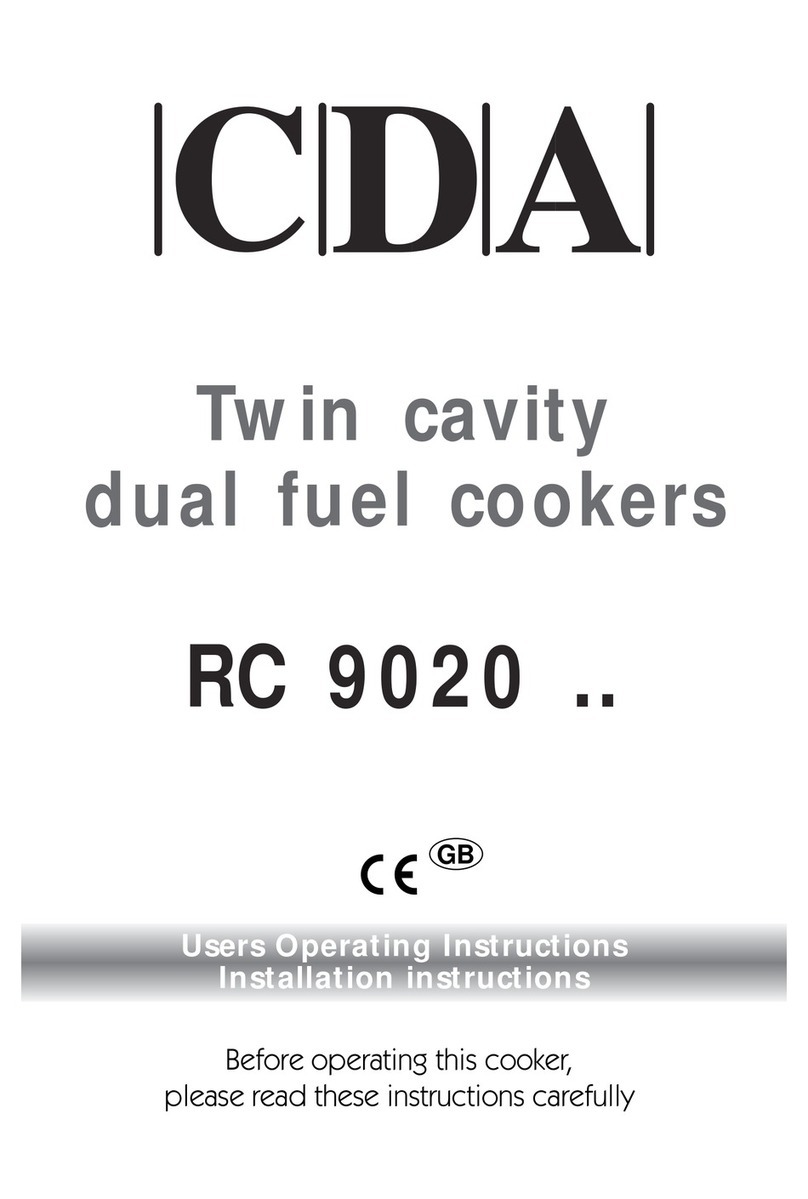
CDA
CDA RC9020 Product guide
Popular Kitchen Appliance manuals by other brands

Bartscher
Bartscher A120406 Translation of the original instruction manual
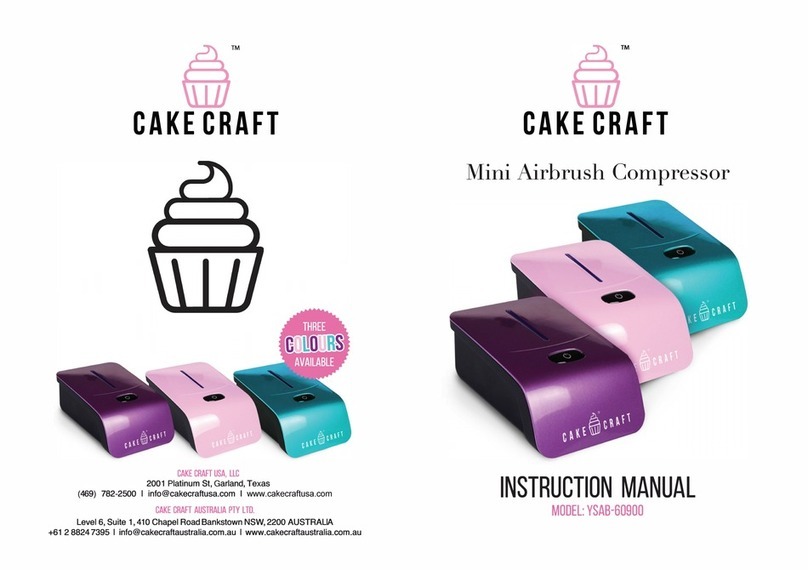
Cake Craft
Cake Craft YSAB-60900 instruction manual
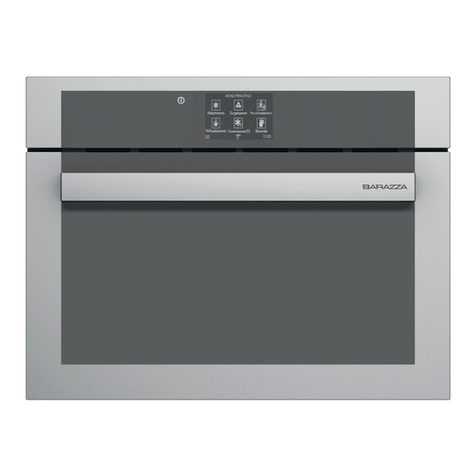
Barazza
Barazza 1ABFY Installation and use manual
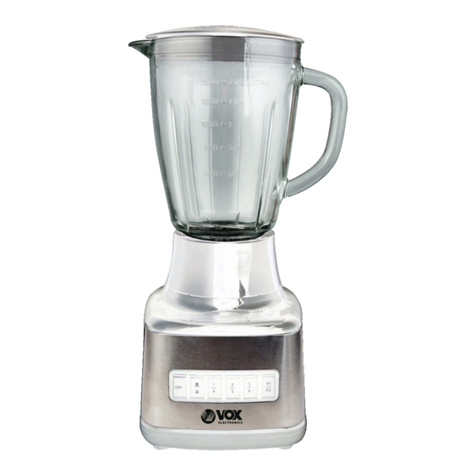
VOX electronics
VOX electronics TM-1057 operating instructions

Bestron
Bestron DMF102 User instructions
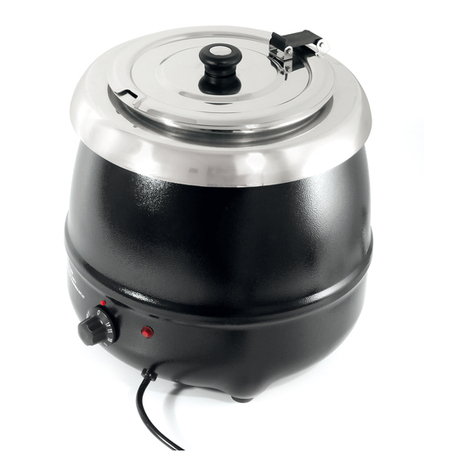
Hendi
Hendi 860083 user manual
